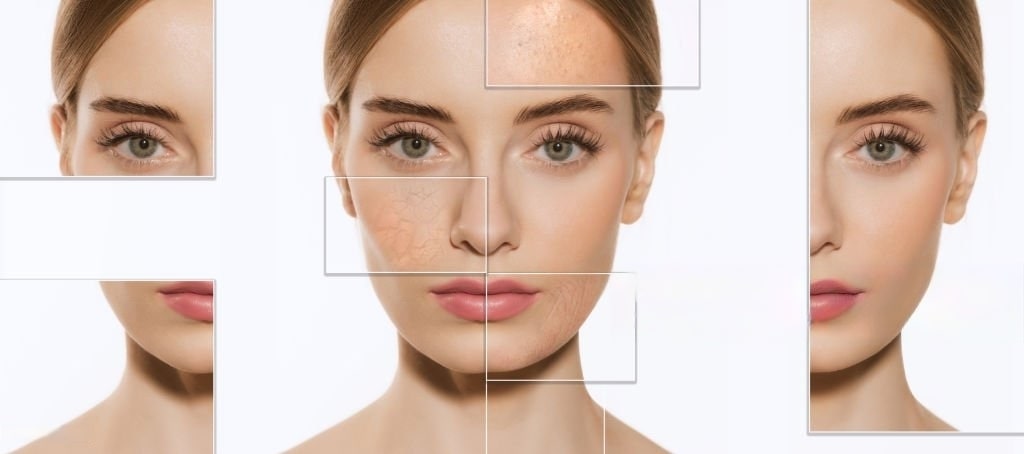People who have been severely and traumatically injured on their faces have been “degloved,” which means that their skin and soft tissues have been ripped off of their inner structures. This terrible wound can happen in many different ways, such as in car accidents, at work, or by falling from very high places. People who lose their faces to degloving will have to deal with more than just physical pain. The mental and emotional effects may be just as bad. This article will talk about what can cause degloved face injuries, how to treat them, and how long and hard it can be to get better. The fact that this condition exists makes it even more important for everyone, including doctors, to be careful, get medical help right away in an emergency, and know more about it.
Causes of Degloving Injuries
High-energy blows can cause degloving injuries, where they violently tear away the skin and soft tissues from the structures below. These cuts can cause a lot of pain and make you feel terrible. Most injuries caused by degloving result from:
- Motor Vehicle Accidents: Degloving injuries are common in motor vehicle, bicycle, and motorcycle accidents because of the rapid velocity with which the body might impact the ground or another hard object. Facial degloving and other forms of serious injury are possible outcomes of such incidents.
- Industrial Accidents: Machinery, equipment, or items used in sectors such as building, manufacturing, and heavy machinery operations can trap or tear off the skin and soft tissues, causing degloving injuries.
- Falls from Heights: Degloving injuries can occur when someone falls from a great height, such as a scaffold or a ladder, and hits the ground or another hard surface.
- Crushing Injuries: Accidents involving large machinery or falling items frequently result in crushing injuries, which can cause degloving injuries if the skin becomes trapped between two hard surfaces.
- Sports and Recreational Activities: In high-impact sports or leisure activities, degloving injuries are possible after a collision, fall, or other traumatic incident.
- Animal Bites: Bigger animals can cause serious injuries, including degloving injuries, in regions where they can tear away the skin from the underlying tissue.
Symptoms of a Degloved Face
Symptoms of a degloved face can vary depending on the severity of the injury, but common indicators may include:
Visible Skin Separation
The face skin becomes visibly detached from the underlying tissues, which is the most noticeable sign. This can be very upsetting and even terrible since it might reveal muscle, tendon, or bone.
Severe Bleeding
When blood vessels are broken, severe bleeding can result from a degloving injury. This bleeding is potentially fatal and calls for urgent medical intervention.
Swelling and Bruising
Rapid localized swelling and bruising might develop, leading to excruciating agony.
Loss of Sensation
Loss of feeling in the degloved region of the face may occur as a result of nerve injury. This may manifest as a lack of feeling or tingling.
Difficulty or Inability to Move Facial Muscles
Damage to the facial muscles and nerves can cause dysfunctional limitations in the use of particular facial muscles.
Open Wounds
Immediate wound care is necessary to prevent problems in the degloved region.
Shock
Severe pain, blood loss, and the traumatic nature of the injury can cause shock, which is characterized by symptoms such as a high heart rate, low blood pressure, disorientation, and pallor.
Emotional Distress
A degloved facial injury can have devastating psychological and emotional effects. Shock, anxiety, despair, and post-traumatic stress disorder are all possible responses.
Furthermore, it is very important for anyone who has or sees a degloved face to get medical help right away. Also, getting quick evaluation and treatment by medical professionals is important for avoiding problems, limiting long-term damage, and helping the body and mind heal.
Treatment Options for Degloved Face
A degloved face may need a mix of medical and surgical treatments to deal with the physical, mental, and functional effects of the stress, depending on how bad the injury is. First aid and emergency medical care must be given right away to stabilize the patient and treat their injuries. Surgical debridement, which means taking out damaged tissue, is often the first step to lower the risk of infection. Depending on how bad the injury is, surgeons may try to use microsurgical techniques to put the torn tissues back together to get blood flowing and nerves working again. When reattachment is not possible, beauty surgeries like skin patches and grafts can help the body heal and look better.
Road to Recovery
If you hurt your face by removing your gloves, it will take a long time to get better. When you’ve been seriously hurt, you need to focus on more than just the physical parts of healing, like wound care, surgeries, and retraining. Healing your body and mind takes time, but it is possible with the help of doctors, therapists, and counselors. After going through tragedy, rebuilding your life and gaining your confidence is a long and hard process that needs patience, determination, and a strong support system.
Degloving injuries
When muscles and bones under the skin rip off the skin and internal tissues, it’s called degloving. It’s very painful and traumatic. High-energy events like car accidents, job accidents, falls from great heights, and crushing disasters often cause these kinds of injuries. A degloving injury has very bad effects on the body and mind. We need quick medical help to stop the bleeding, prevent the wound from getting infected, and accelerate the healing process.
Impairment
Doctors often use surgical procedures like skin grafts or tissue patches to heal the hurt area and remove dead or damaged tissue from wounds. People who have degloving injuries often need physical treatment to help them heal and get back to using the broken limb or body part. It’s also important not to ignore the mental and emotional effects of these accidents. Many people need counseling and other help to deal with the emotional fallout.
Conclusion
Furthermore, degloving injuries violently separate the skin and soft tissues from the structures below, thereby having significant effects on the body and mind. Similarly, these kinds of injuries often happen in high-energy situations like car accidents, falls from high places, and other similar events.
Part of the often hard road to recovery is physical treatment to regain function and mobility, emotional support to deal with the mental effects, and different medical steps to lessen the long-term effects. Preventative steps, like following safety rules and wearing safety gear, are still the best way to lower the number of degloving accidents.
Understanding the causes, symptoms, and treatment choices for disabling injuries is important for both medical experts giving the right care and regular people taking steps to avoid these stressful situations. The process of getting back on your feet after a degloving injury shows how strong the human will is and how important modern medicine and mental support are for helping people put their lives back together.



Comments are closed.